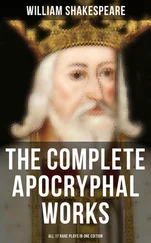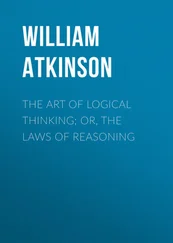The Four Steps in Inductive Reasoning , as stated by Jevons, are as follows:
First Step. —Preliminary observation.
Second Step. —The making of hypotheses.
Third Step. —Deductive reasoning.
Fourth Step. —Verification.
It will be seen that the process of Inductive Reasoning is essentially a synthetic process , because it operates in the direction of combining and uniting particular facts or truths into general truths or laws which comprehend, embrace and include them all. As Brooks says: "The particular facts are united by the mind into the general law; the general law embraces the particular facts and binds them together into a unity of principle and thought. Induction is thus a process of thought from the parts to the whole—a synthetic process." It will also be seen that the process of Inductive Reasoning is essentially an ascending process , because it ascends from particular facts to general laws; particular truths to universal truths; from the lower to the higher, the narrower to the broader, the smaller to the greater.
Brooks says of Inductive Reasoning: "The relation of induction to deduction will be clearly seen. Induction and Deduction are the converse, the opposites of each other. Deduction derives a particular truth from a general truth; Induction derives a general truth from particular truths. This antithesis appears in every particular. Deduction goes from generals to particulars; Induction goes from particulars to generals. Deduction is an analytic process; Induction is a synthetic process. Deduction is a descending process—it goes from the higher truth to the lower truth; Induction is an ascending process—it goes from the lower truth to the higher. They differ also in that Deduction may be applied to necessary truths, while Induction is mainly restricted to contingent truths." Hyslop says: "There have been several ways of defining this process. It has been usual to contrast it with Deduction. Now, deduction is often said to be reasoning from general to particular truths, from the containing to the contained truth, or from cause to effect. Induction, therefore, by contrast is defined as reasoning from the particular to the general, from the contained to the containing, or from effect to cause. Sometimes induction is said to be reasoning from the known to the unknown. This would make deduction, by contrast, reasoning from the unknown to the known, which is absurd. The former ways of representing it are much the better. But there is still a better way of comparing them. Deduction is reasoning in which the conclusion is contained in the premises . This is a ground for its certitude and we commit a fallacy whenever we go beyond the premises as shown by the laws of the distribution of terms. In contrast with this, then, we may call inductive reasoning the process by which we go beyond the premises in the conclusion .... The process here is to start from given facts and to infer some other probable facts more general or connected with them. In this we see the process of going beyond the premises. There are, of course, certain conditions which regulate the legitimacy of the procedure, just as there are conditions determining deduction. They are that the conclusion shall represent the same general kind as the premises , with a possibility of accidental differences. But it goes beyond the premises in so far as known facts are concerned."
The following example may give you a clearer idea of the processes of Inductive Reasoning:
First Step. Preliminary Observation. Example : We notice that all the particular magnets which have come under our observation attract iron . Our mental record of the phenomena may be stated as: "A, B, C, D, E, F, G, etc., and also X, Y, and Z, all of which are magnets , in all observed instances, and at all observed times, attract iron ."
Second Step. The Making of Hypotheses. Example : Upon the basis of the observations and experiments, as above stated, and applying the axiom of Inductive Reasoning, that: "What is true of the many, is true of the whole," we feel justified in forming a hypothesis or inference of a general law or truth, applying the facts of the particulars to the general, whole or universal, thus: " All magnets attract iron."
Third Step. Deductive Reasoning. Example : Picking up a magnet regarding which we have had no experience and upon which we have made no experiments, we reason by the syllogism, as follows: (1) All magnets attract iron; (2) This thing is a magnet; therefore (3) This thing will attract iron. In this we apply the axiom of Deductive Reasoning: "Whatever is true of the whole is true of the parts."
Fourth Step. Verification. Example : We then proceed to test the hypothesis upon the particular magnet, so as to ascertain whether or not it agrees with the particular facts. If the magnet does not attract iron we know that either our hypothesis is wrong and that some magnets do not attract iron; or else that our judgment regarding that particular "thing" being a magnet is at fault and that it is not a magnet. In either case, further examination, observation and experiment is necessary. In case the particular magnet does attract iron, we feel that we have verified our hypothesis and our judgment.
CHAPTER XII.
REASONING BY INDUCTION
Table of Content
The term "Induction," in its logical usage, is defined as follows: "(a) The process of investigating and collecting facts; and (b) the deducing of an inference from these facts; also (c) sometimes loosely used in the sense of an inference from observed facts." Mill says: " Induction , then, is that operation of the mind, by which we infer that what we know to be true in a particular case or cases, will be true in all cases which resemble the former in certain assignable respects. In other words, Induction is the process by which we conclude that what is true of certain individuals of a class, is true of the whole class, or that what is true at certain times will be true in similar circumstances at all times."
The Basis of Induction is the axiom that: " What is true of the many is true of the whole ." Esser, a well known authority, states this axiom in rather more complicated form, as follows: "That which belongs or does not belong to many things of the same kind, belongs or does not belong to all things of the same kind."
This basic axiom of Induction rests upon the conviction that Nature's laws and manifestations are regular, orderly and uniform . If we assume that Nature does not manifest these qualities, then the axiom must fall, and all inductive reason must be fallacious. As Brooks well says: "Induction has been compared to a ladder upon which we ascend from facts to laws. This ladder cannot stand unless it has something to rest upon; and this something is our faith in the constancy of Nature's laws." Some authorities have held that this perception of the uniformity of Nature's laws is in the nature of an intuitive truth, or an inherent law of our intelligence. Others hold that it is in itself an inductive truth, arrived at by experience and observation at a very early age. We are held to have noticed the uniformity in natural phenomena, and almost instinctively infer that this uniformity is continuous and universal.
The authorities assume the existence of two kinds of Induction, namely: (1) Perfect Induction; and (2) Imperfect Induction. Other, but similar, terms are employed by different authorities to designate these two classes.
Perfect Induction necessitates a knowledge of all the particulars forming a class; that is, all the individual objects, persons, things or facts comprising a class must be known and enumerated in this form of Induction. For instance, if we knew positively all of Brown's children, and that their names were John, Peter, Mark, Luke, Charles, William, Mary and Susan, respectively; and that each and every one of them were freckled and had red hair; then, in that case, instead of simply generalizing and stating that: "John, Peter, Mark, Luke, Charles, William, Mary and Susan, who are all of Brown's children, are freckled and have red hair," we would save words, and state the inductive conclusion: "All Brown's children are freckled and have red hair." It will be noticed that in this case we include in the process only what is stated in the premise itself , and we do not extend our inductive process beyond the actual data upon which it is based. This form of Induction is sometimes called "Logical Induction," because the inference is a logical necessity, without the possibility of error or exception. By some authorities it is held not to be Induction at all, in the strict sense, but little more than a simplified form of enumeration. In actual practice it is seldom available, for it is almost impossible for us to know all the particulars in inferring a general law or truth. In view of this difficulty, we fall back upon the more practical form of induction known as:
Читать дальше












